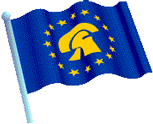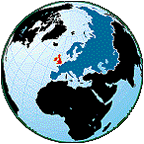The Last War: The Paneuropean Federation
Once again it was the best of times. Paris was the center of the world, with all of Europe at her feet. Across the Rhine, in Berlin, the Kurfurstendam bustled far into the night, a dark and powerful consort to the City of Lights. Her reach stretched from Brittany to beyond the Urals, and from the Mediterranean to the frozen Arctic. Beneath the banner of the Paneuropean Federation, continental Europe was finally united, a commonwealth of many nationalities bound by chains of economy and security.
It was a state of contrasts. The gulf separating the very rich from the bourgeois and poor was deep. The economic magnates were the new aristocracy, their command of the European markets the only source of stability in an otherwise fragmented and stratified society. The political ministers surrounded them like barons about a royal court, and the machineries of destruction they produced were their knights and armies. Most of Europe worked to support this nobility, as they had done for centuries past. And both leaders and people set great store in their own national identities, viewing each member nation as a unique link in a larger, stronger chain.
Riding a wave of growing conservatism, investments and influence, the Catholic Church was stronger than ever, the state religion of Paneurope. Her influence was economic, political and even military. A hundred years before, Stalin had asked derisively "How many divisions does the Pope have?" In 2045, Rome housed three, including Magna Veritas, acknowledged as the continent's elite. The battalion-strength Vatican Guard was the best of the best, each member individually drawn from across the Federation, with selection based on both combat skill and the strength of their religious devotion.
Yet where the Combine was born of standardization, Paneurope continued to value variety. This was both an outgrowth of the natural diversity of Europe, and reaction to the failed Soviet experiment. At its best, it meant freedom of speech and thought at a level unknown in the other empires; at its worst, it was nationalism resurgent. The Paneuropean military forces were an amalgamation of the armies of its member states. Most divisions maintained both their nationalistic prejudices and methods of organization. This resulted in friction, often breaking down the chain of command, as Warsaw Pact doctrines ran head-on into methodical Germans and free-spirited Italians.
And some old conflicts were never forgotten. Federation units raised from the Balkans still remembered their independence and the uninvited "stabilization" of their homelands. German Bundeswehr regiments distrusted their counterparts from the old Soviet Union, who in turn fought for Mother Russia first. All feared the fanaticism of the Vatican divisions. The Ukranian and Georgian Free States were technically independent allies of the Federation, but in truth, they soon became little more than agricultural slave territories, bound to the Paneuropean will. Occasionally these old prejudices broke into violent conflict, with Paneuropean forces turning against each other. Yet, overall, the Paneuropean military had very high morale and were highly efficient, setting aside their differences in the face of aggression.
 |
 |

















